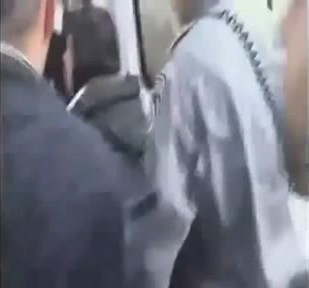On June 19, the Ethics Court of the Israel Press Council ruled in favor of Presspectiva, CAMERA’s Israeli branch, following a complaint that Presspectiva filed against the Israeli news site Ynet and reporter Elior Levi. The Feb. 27 article in question (“Video: 11-year-old Palestinian stone-thrower arrested”) contained a serious falsehood in violation of the Journalistic Code of Ethics. The decision states, among other things, “that there is a complete contradiction between what is written in the article and the pictures seen in the video clip. It is a substantive contradiction.”
As previously documented by CAMERA/Presspectiva, Levi reported on a video clip filmed by a B’Tselem volunteer in which a Palestinian boy was arrested by Israeli policemen in the West Bank town of Nabi Salah after having thrown rocks. Despite the fact that the video shows the police urging the boy’s mother at least eight times to accompany her son into the police van, and that they open the door to allow her to get in, Levi wrote:
In the video the officers can be seen putting the boy, Karim al-Tamimi, in a police vehicle after chasing him down. The boy’s mother pleaded with the officers to allow her to accompany him to the Sha’ar Binyamin police station, but her request was denied. . . .
The boy’s father, Salah al-Tamimit [sic] told Ynet, “They took him without a chaperone, and by the time we arrived at the police station he was already being interrogated.”

Presspectiva approached Ynet editors three times urging correction, but the editors failed to respond or to set the record straight. Presspectiva then filed a complaint with the Press Council, detailing how Ynet violated the Code of Ethics clauses dealing with factual accuracy, fact-checking, correction of errors, and apologies. The Ethics Court ruled:
We are all of the opinion that with regard to the point in question about the incident, in which the boy’s mother tries to accompany her son, a minor, there is a total contradiction between what is written in the article and the pictures seen in the video clip. It is a substantive contradiction which ought to have been resolved before publication of the article, or at least ought to be dealt with in a corrective article.
On this point the defendants violated clause 4a of the Professional Journalists’ Code of Ethics, dealing with the publication, either knowingly or negligently, of untruthful material.
All the more so considering clause 5a of the aforementioned code, according to which, prior to publication of any material, its veracity should be checked with the most reliable source, and this source after all was in the defendants own hands and used in the very same article.
. . . The violation, as described above, was indeed committed. Yet our feeling is that this violation stems from mere negligence, and for that reason we have decided to impose only a warning, in the form of publication of this decision on the [Ynet] site with appropriate visibility. (Emphases in the original. CAMERA’s translation.)
Presspectiva/CAMERA applauds the decision, but objects to the decision’s qualification in which it attributes the falsehood to “mere negligence,” and elsewhere refers to it as a mistake carried out in all innocence. Good faith is not an excuse or justification for distorted or inaccurate news. As repeatedly documented by CAMERA and Presspectiva, a substantial number of errors are due to the journalist’s negligence, lack of professionalism or laziness. None of these justifies the publication of falsehoods.
The Ethics Court missed an opportunity to send a clear message. Instead of treating Levi forgivingly, the council might have demanded that editors of newspapers and news sites dust off the Code of Ethics, refresh the procedures, and remind their employees of the responsibilities that they shoulder as journalists.
